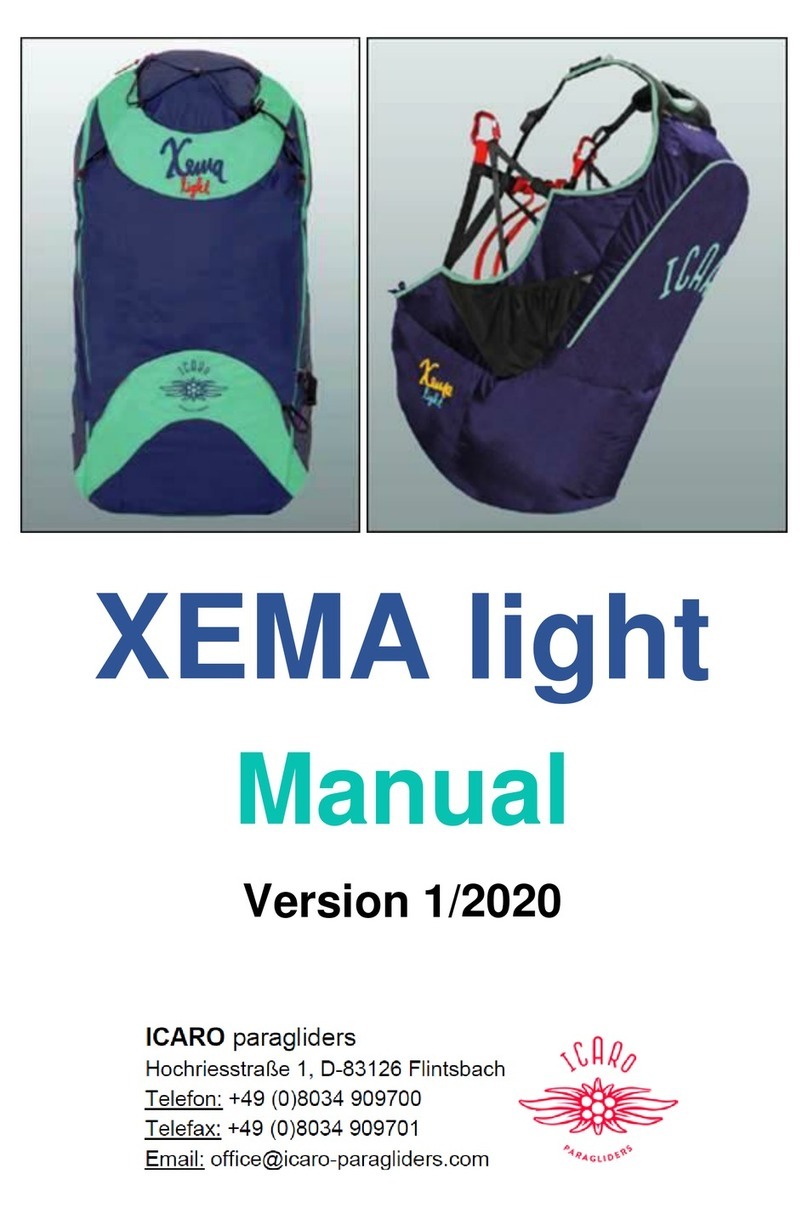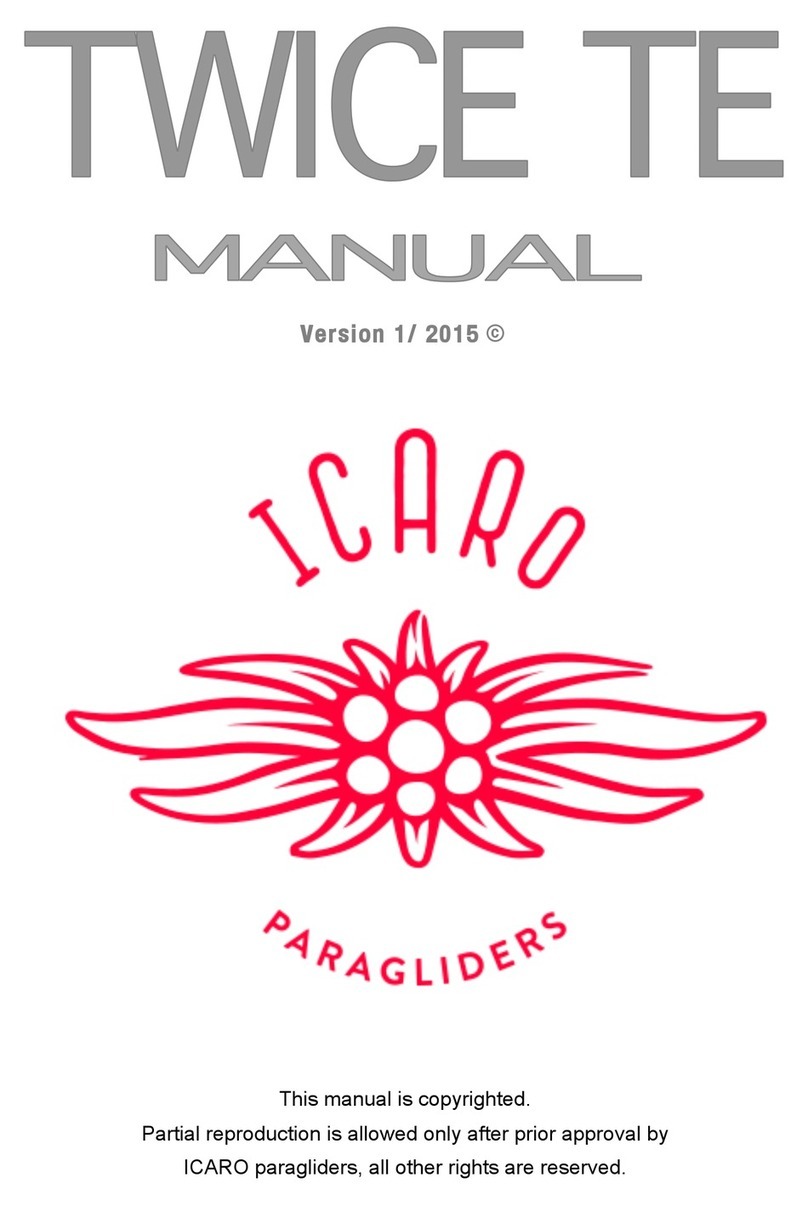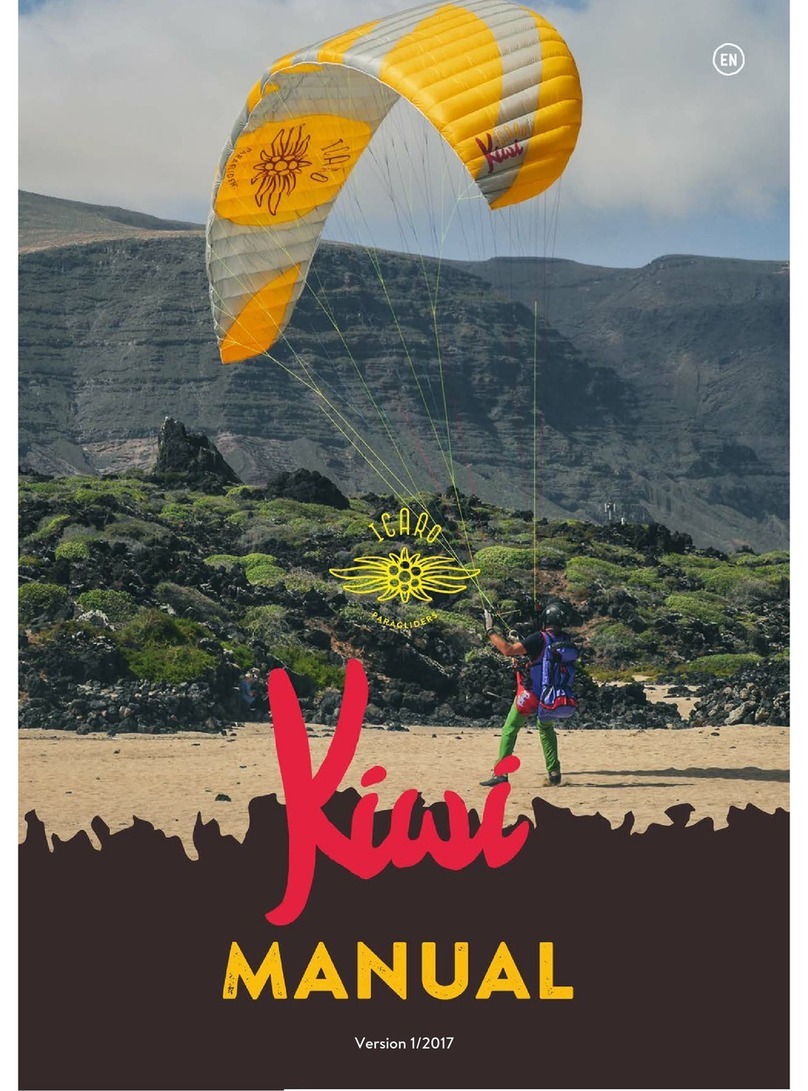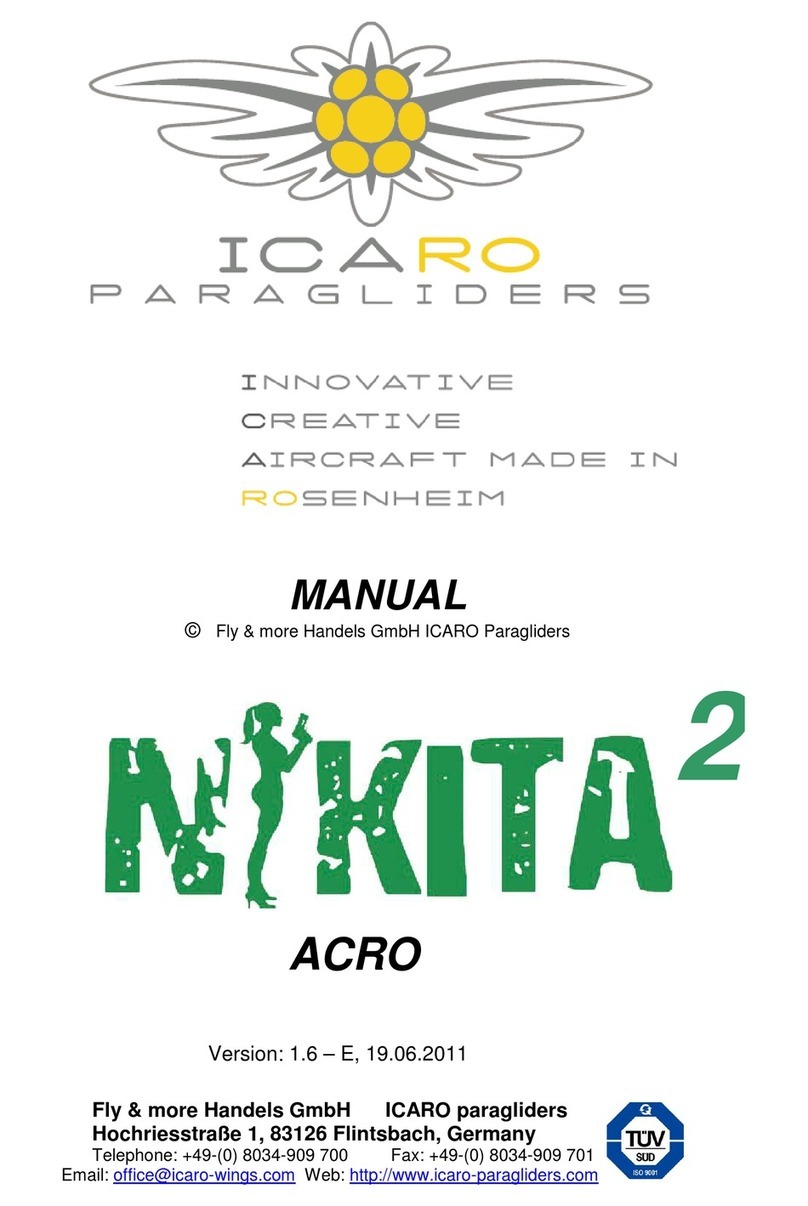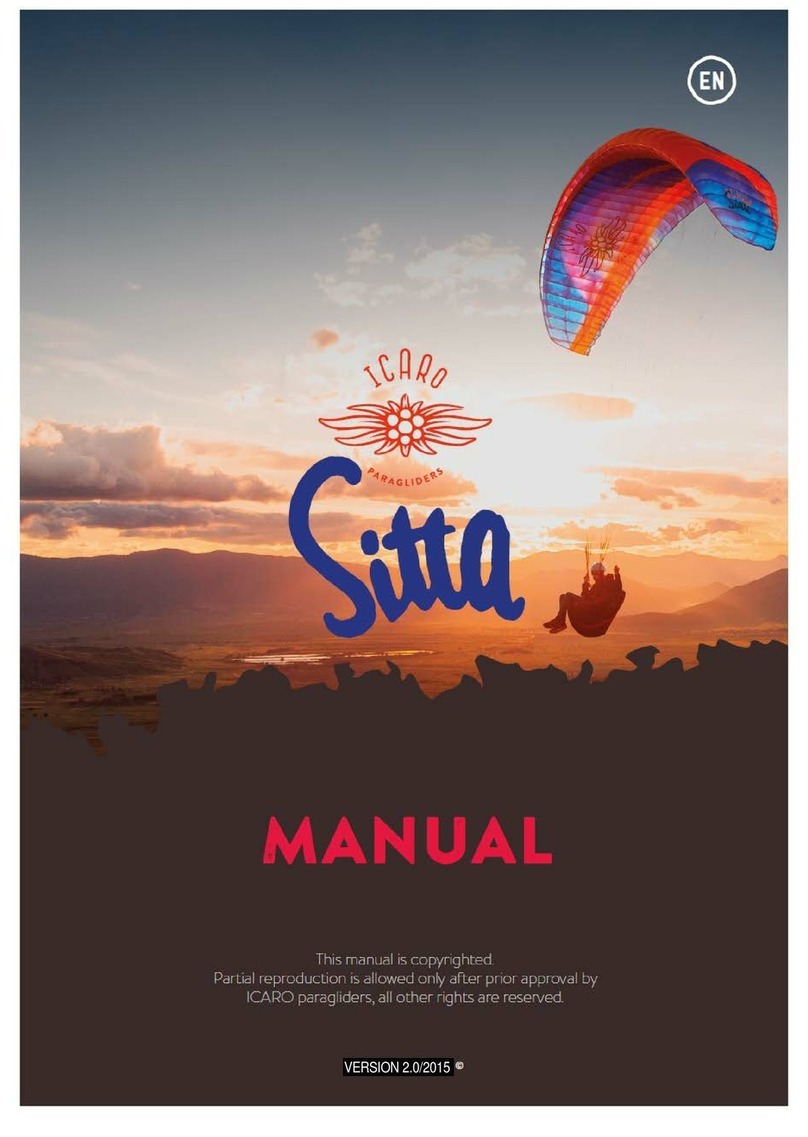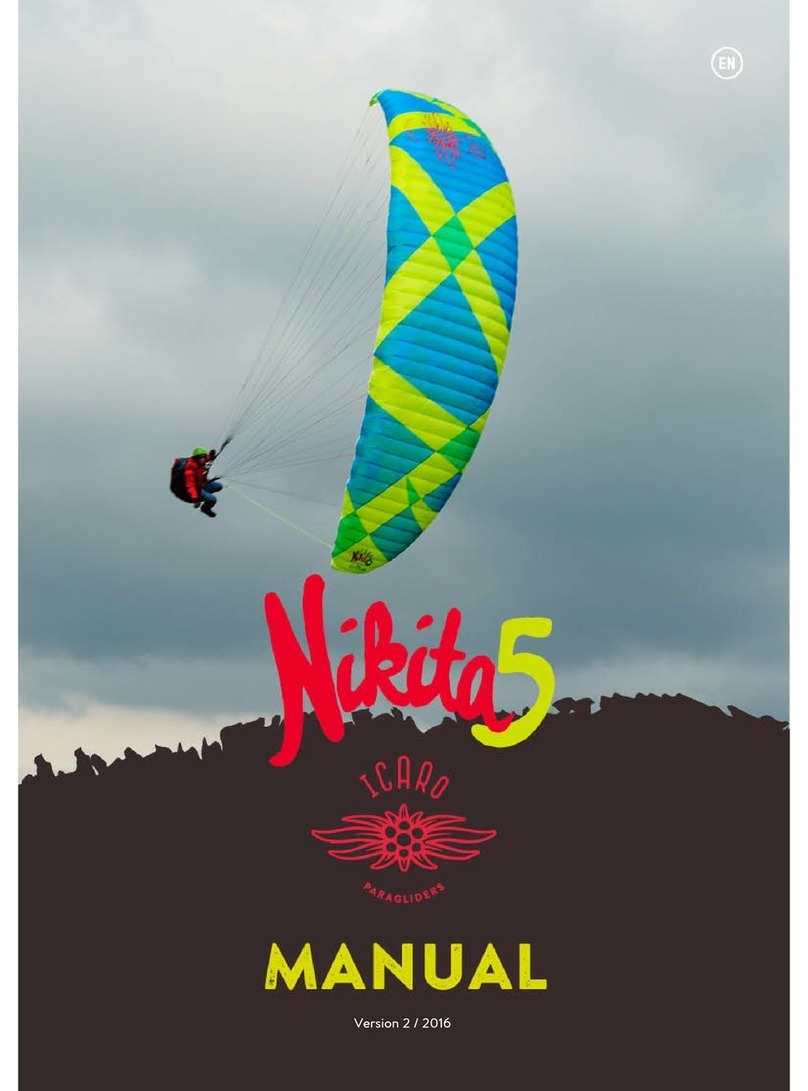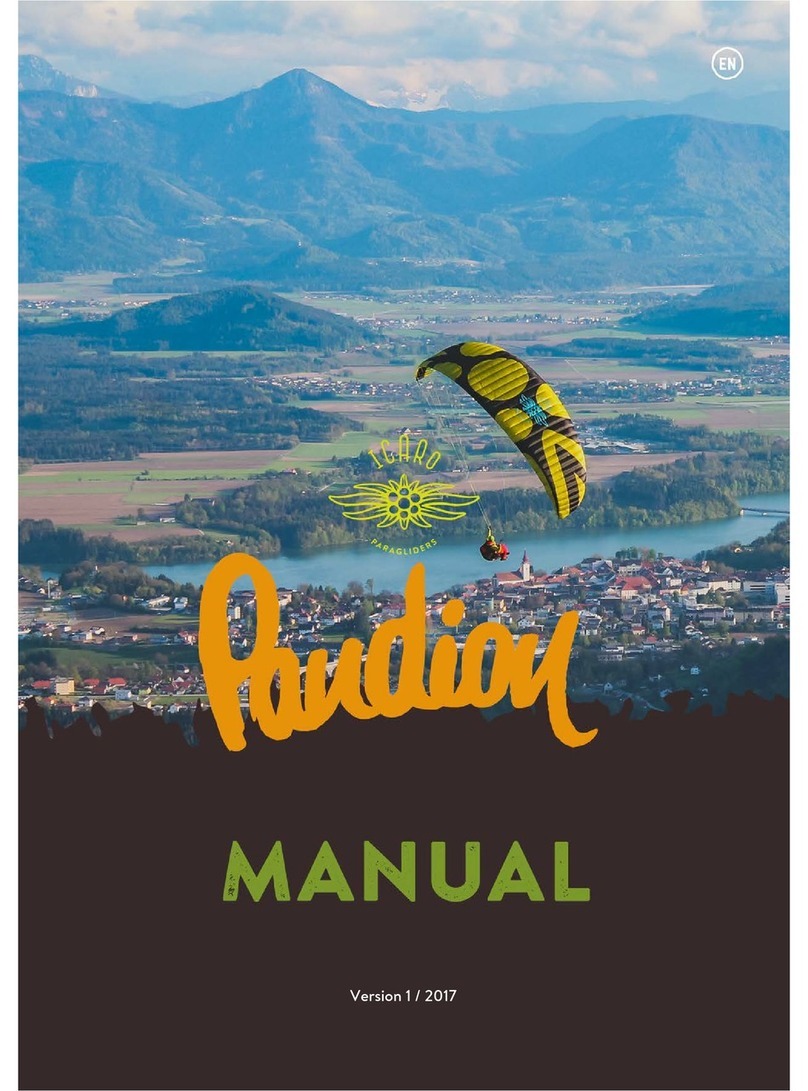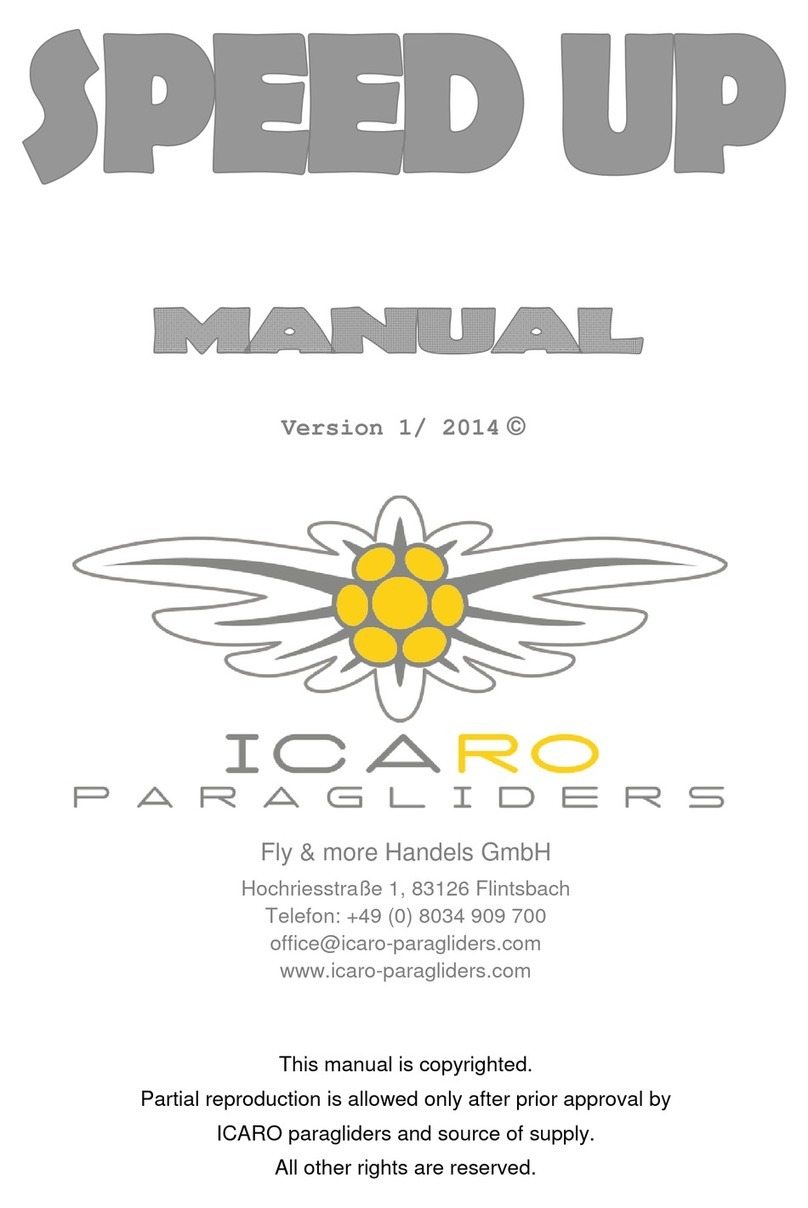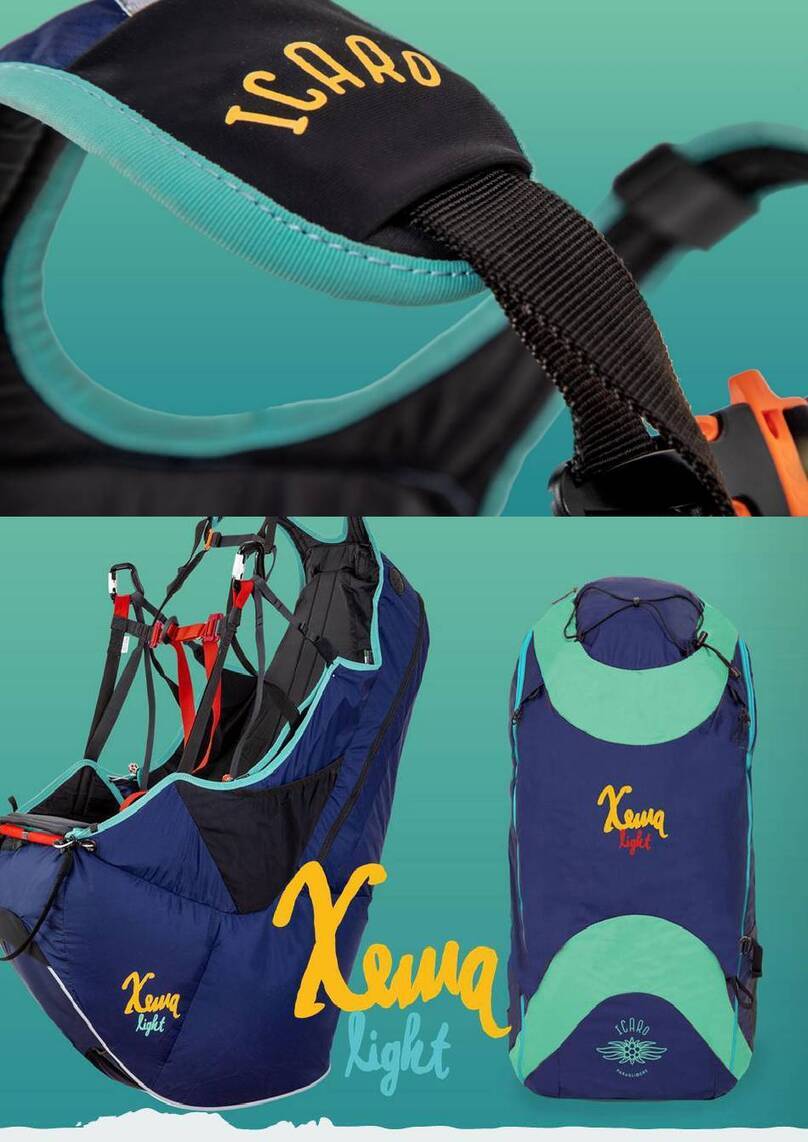
Page 6
Version 2 / PPG / 2022
year, only EN A-classified paragliders are recommended. He is neither suitable for
aerobatics nor pattern tested.
In normal flight, the flight and control behavior of the PICA 2 requires mastery of the flight
techniques taught in the basic training. Mastering active flying is essential for safe thermal
flights.
In the event of malfunctions, it is advantageous to have the basic theoretical knowledge of
how to avoid and control malfunctions learned in the training course, although devices in
this category do not place any significant demands on the pilot.
It is therefore recommended to learn and practice both troubleshooting and rapid
descent aids during safety training.
The PICA 2 is neither suitable nor approved for aerobatics. All maneuvers in which a bank
angle of 60° or a pitch angle of 30° are exceeded are considered aerobatic, as well as flight
maneuvers in which the canopy is flown from behind.
The PICA 2 in sizes S, M, ML and L is registered by the Direction générale de l'aviation
civile (DGAC) and approved as a motorized paraglider. You can find additional information
about flying with a motor under a separate article.
Canopy
The conventionally constructed profile nose with rods and the rearwardly offset
suspension points on the A-level with a newly calculated performance profile and the
mixed material Skytex 38 and STA 15 Techfiber Services Inc. are the essential features
of the new PICA 2.
The advantages that this new profile offers the pilot are:
•The glider starts better and easier, which makes training operations much easier.
•A better dynamic pressure is achieved over the entire range of the angle of attack,
because: the higher this is, the more stable the canopy is over the entire speed
range.
•The paraglider, stalls later, and gives the pilot a larger control line area.
•In high-speed flight, the profile is more dimensionally accurate than with
conventional profiles and
•The reduced air resistance results in better gliding and climbing performance. In
addition, different fabric materials on the upper and lower sail reduce the weight, but
still guarantee the highest form and aerodynamic stability and strength. The dirt
outlet openings on both sides of the leech make it easier to clean the inside of the
canopy. The coating makes the fabric water-repellent, UV-stabile and air-
impermeable. Between the single groups of main lines are taut ribbons sewn in,
which are regulating the tension of the sail.
Lines
The entire line system is formed from individual lines, which are
sewn and looped at both ends. The lines and stitching are
subject to rigorous production controls, to ensure high and
consistent manufacturing quality.
Upon delivery, the PICA 2 is provided with an “anchor stitch”
trim loop on the C level. These are used to compensate for the
unavoidable changes in length of the lines, which depend, among other things, on
climatic conditions, the storage of the glider, maneuvers, the type of line used, etc.
